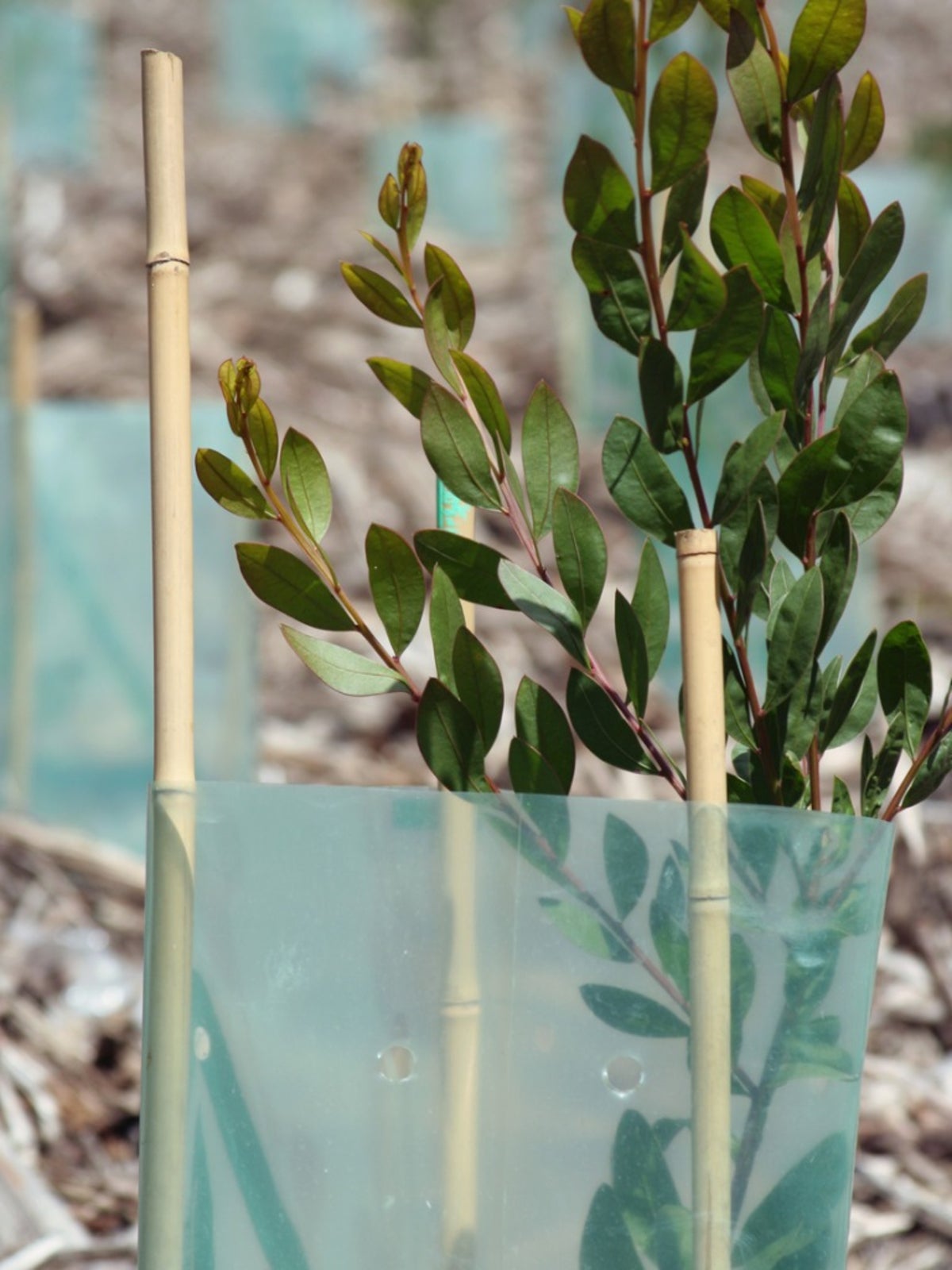Propagating Eucalyptus: How To Grow Eucalyptus From Seed Or Cuttings

The word eucalyptus is derived from the Greek meaning "well covered" referring to the flower buds, which are covered with a lidded, cup-like, tough outer membrane. This membrane is flung off as the flower blooms, revealing the woody fruit containing many eucalyptus tree seeds. Let's learn more about how to grow eucalyptus from seed and other methods of eucalyptus propagation.
Eucalyptus Propagation
Native to Australia and encompassing over two-thirds of its land mass, eucalyptus is not only the koala's mainstay, but is known to control aphids and other insect infestations. Popular for its use in floral arrangements, eucalyptus propagation can be accomplished in several ways, with eucalyptus tree seeds being the most common and reliable method. Grafting and micro propagation are also used. Eucalyptus cuttings for propagation are a less than fool proof method, but some species take to this method better than others.
How to Grow Eucalyptus from Seed
Eucalyptus grows rapidly in poor soil conditions and readily reseeds itself in warmer climates. However, some types of eucalyptus require cold stratification, wherein the seed must be chilled to begin the process of germination. Varieties of eucalyptus which need to be cold stratified include:
- E. amygdalina
- E. coccifera
- E. dalrympleana
- E. debeuzevillei
- E. delegatensis
- E. dives
- E. elata
- E. fastigata
- E. glaucescens
- E. goniocalyx
- E. kybeanensis
- E. mitchellana
- E. niphophila
- E. nitens
- E. pauciflora
- E. perriniana
- E. regnans
- E. stellulata
To cold stratify eucalyptus tree seeds, mix together 1 teaspoon (5 ml.) of seeds to 2 to 3 tablespoons (30-44 ml.) of filler such as perlite, vermiculite, or sand. Dampen the mixture, put in a zip-lock bag labeled and dated, and place in the refrigerator for four to six weeks. After that time, you may sow the seeds including the inert filler. So now, how to grow eucalyptus from seed? Sow eucalyptus tree seeds in the spring (late spring in some climates) in flats of pasteurized soil medium placed in a shady area and covered with white plastic. Once some maturity has been achieved, transplant to small pots and then again upon maturation into a prepared garden row. Of course, the eucalyptus tree seeds may also be directly sowed into the container in which the plant will continue to grow.
Starting Eucalyptus Trees from Cuttings
Growing eucalyptus from seed is the easiest route to propagation, however, some brave souls have been known to attempt eucalyptus propagation from rooting eucalyptus cuttings. Rooting cuttings is a bit more difficult to achieve unless one uses mist propagation units or micro propagation facilities. For the intrepid gardener, however, the following are instructions for rooting eucalyptus cuttings:
- Choose 4 inch (10 cm.) long mature shoots during June/July and dip the bottom tips of the cuttings in rooting hormone for about 30 seconds. Eucalyptus cuttings should have at least one budding leaf but if it has sprouting leaves, break these off.
- Fill a pot with perlite and position the cuttings down into the medium with the rooting hormone end covered. Allow the pot to absorb water until moistened through its bottom hole set into a saucer filled with water and then cover the pot with a plastic bag and place in a warm location.
- Rooting eucalyptus cuttings for propagation should remain in temperatures about 80 to 90 degrees F. (27-32 C.). Keep moist and hopefully after four weeks or so your cuttings will have rooted and will be ready for transplanting.
Good luck!
Gardening tips, videos, info and more delivered right to your inbox!
Sign up for the Gardening Know How newsletter today and receive a free copy of our e-book "How to Grow Delicious Tomatoes".

Amy Grant has been gardening for 30 years and writing for 15. A professional chef and caterer, Amy's area of expertise is culinary gardening.
-
 Looking For Plants To Give You The Soft And Fuzzies? Try These 5 Fuzzy Leaf Plant Options
Looking For Plants To Give You The Soft And Fuzzies? Try These 5 Fuzzy Leaf Plant OptionsLovers of texture, drama, silver foliage and tactile plants will adore these special sensory garden additions. These fuzzy leaf plant options will leave you all aglow
By Susan Albert
-
 Get Ready For A Summer Of Hummers! Grow These Full Sun Hummingbird Plants and Flowers
Get Ready For A Summer Of Hummers! Grow These Full Sun Hummingbird Plants and FlowersIf you’re lucky enough to enjoy a sunny backyard, make sure you are maxing out on your pollinator opportunities and grow these full sun hummingbird plants and flowers
By Tonya Barnett